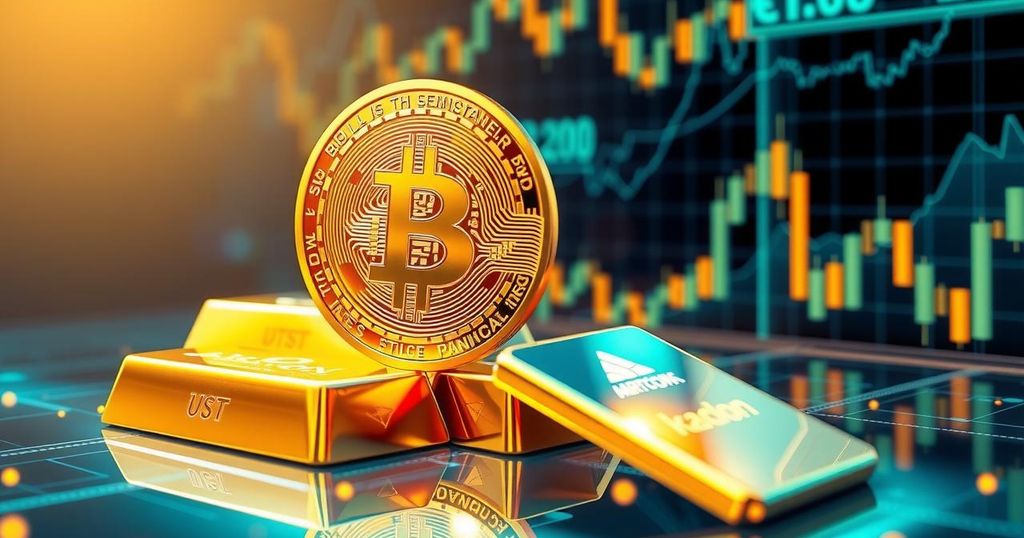Bitcoin Surges Past $87K as Investors Shift towards Hard Assets
Bitcoin’s price exceeded $87,600, driven by inflation concerns and increased global liquidity. Investors shifted funds into hard assets, particularly Bitcoin and gold, following significant monetary changes and Trump’s “Liberation Day” tariffs. Market indicators show cautious recovery, although institutional confidence is returning slowly with modest ETF inflows. Future trends will depend on the Federal Reserve’s upcoming policy decisions.
During Asian trading hours on a recent Monday, Bitcoin’s price surged beyond $87,600, marking its highest value since early April. Analysts attribute this increase to a capital rotation towards hard assets amid inflation concerns, coupled with rising global liquidity stemming from an expanding M2 money supply and a declining U.S. dollar, noted Vincent Liu, chief investment officer at Kronos Research.
Bitcoin saw a notable price increase of approximately 3.6% within a day, with trading volumes exceeding $24.5 billion, surpassing other non-stablecoin cryptocurrencies during this period. Liu highlighted that relaxed financial conditions have prompted investors to increasingly allocate capital into hard assets, prominently Bitcoin and gold, which recently surpassed $3,400 per ounce for the first time.
This upward movement occurred shortly after President Trump’s “Liberation Day” tariffs, which resulted in a significant drop in asset prices. Ryan Yoon, lead research analyst at Tiger Research, indicated that market sentiment indicators reached lows during this time, leading investors to explore rebound opportunities in Bitcoin, which is perceived as offering higher growth potential than gold.
Yoon also referenced the relative strength index (RSI), commonly used to assess market momentum over 14-day periods, as it reflected waning performance among key market metrics. This Bitcoin shift took place alongside a decline in the U.S. Dollar Index (DXY) to 98.5, its lowest since February 2022, triggered by speculation regarding the potential removal of Federal Reserve Chairman Jerome Powell.
Following Trump’s announcement of a 90-day tariff exemption on April 10, market indicators began to show initial recovery. On-chain indicators like NUPL and MVRV-Z illustrated improving conditions, despite Yoon advising investors to develop strategies that align with their risk tolerance to accommodate expected short-term volatility.
There are subtle signs of returning institutional confidence, as evidenced by Bitcoin spot ETF flows showing $12.7 million in net inflows, reversing previous outflows. However, this recovery represents the lowest weekly inflow observed this year, indicating a cautious market.
Analysts from QCP Capital have pointed out the evolving correlation between Bitcoin, gold, and equities, with the narrative of Bitcoin as a safe haven and inflation hedge gaining momentum. Future market stability, however, hinges on the Federal Reserve’s forthcoming decisions during the May 6-7 FOMC meeting, according to Liu.




Post Comment